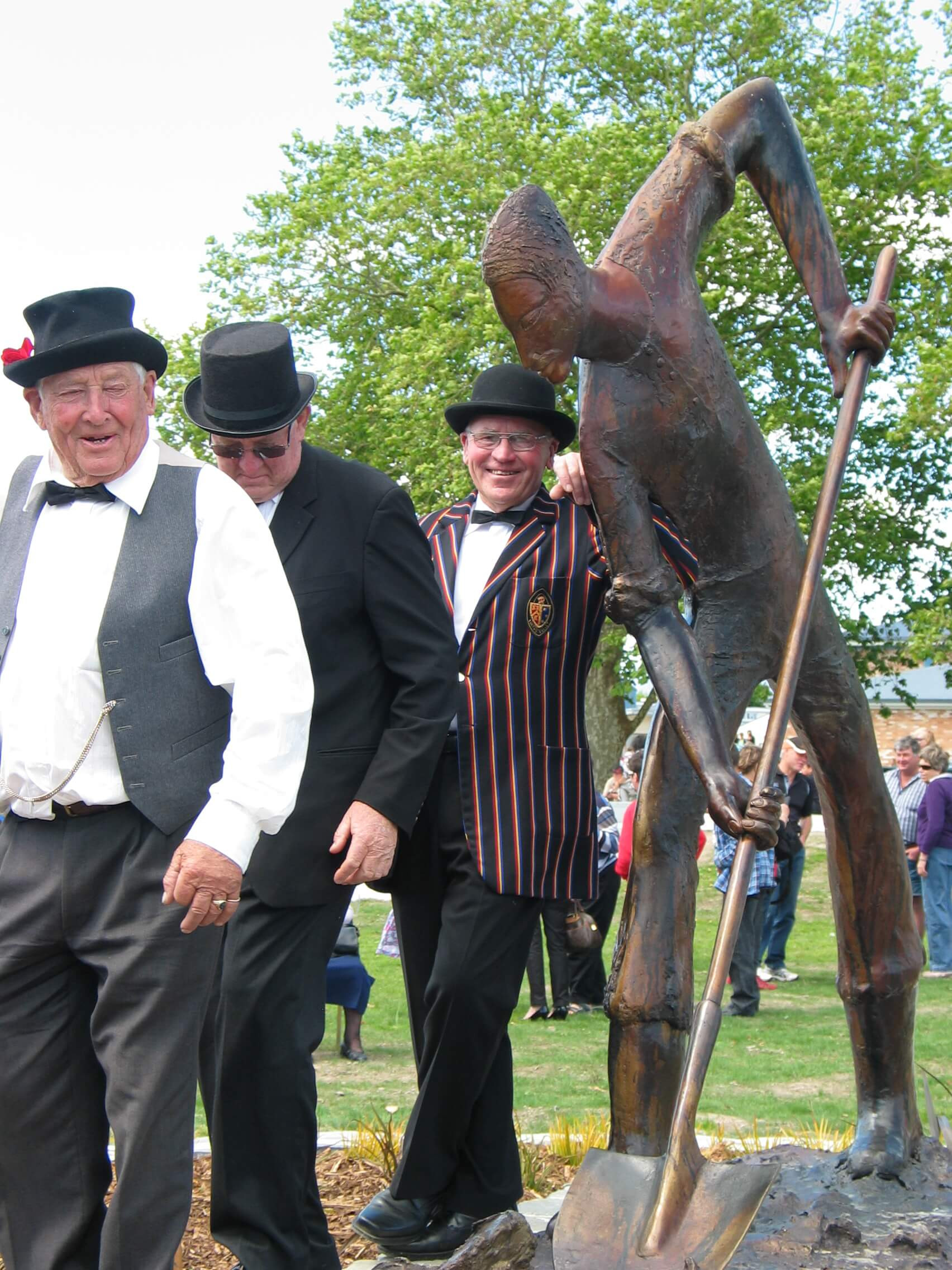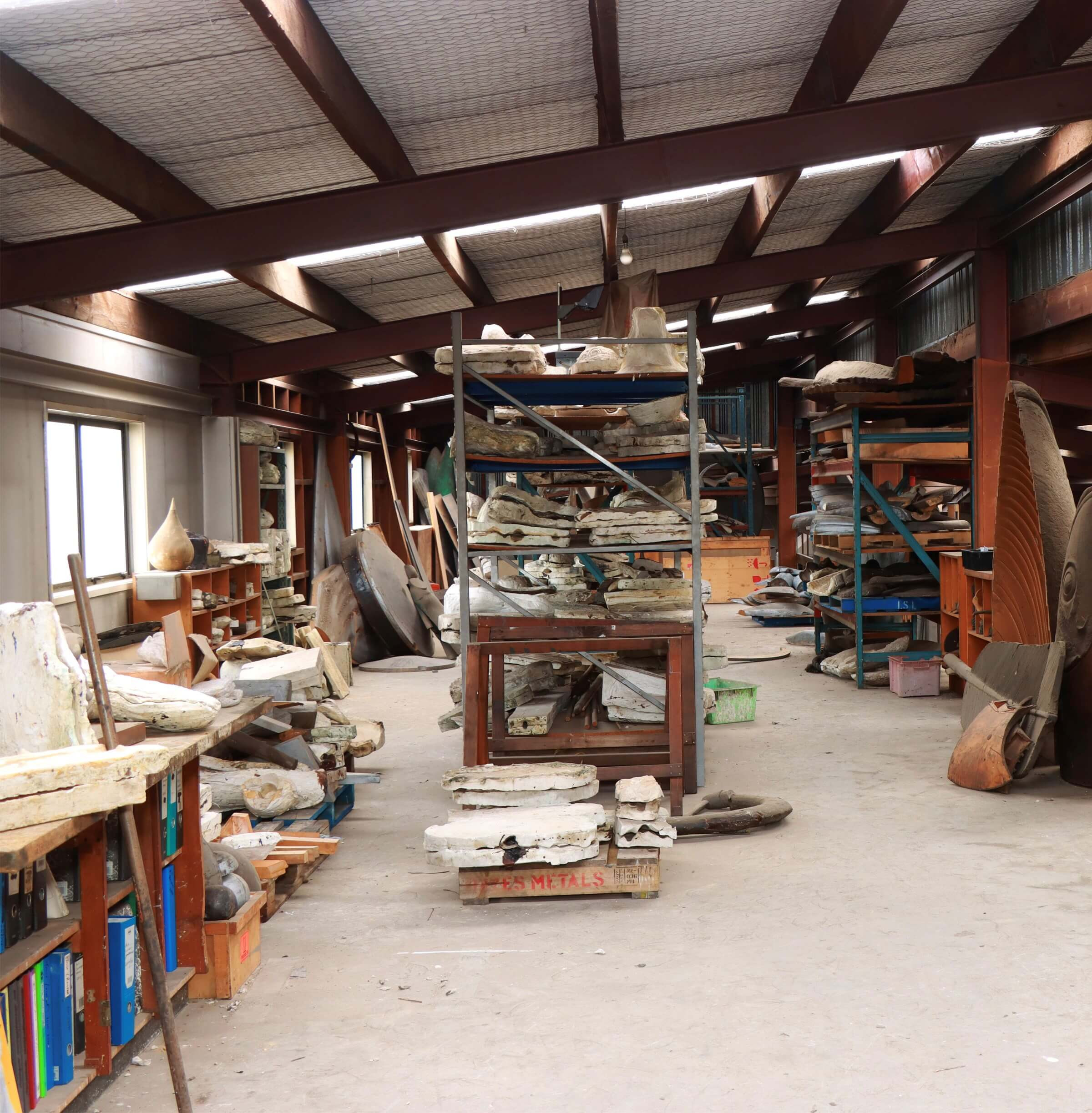Visit Sculptures In The Waikato
Visit Sculptures In The WaikatoHauraki Plains Pioneer, 2010
Pioneer Park, Hugh Hayward Domain, Ngātea
On 6 November 2010, the Hauraki Plains Pioneer was unveiled at Pioneer Park in Ngatea, at an event known as “Settlers’ Day”: the 100th anniversary of the beginning of the land ballots on the Hauraki Plains, where land purchase was determined by a lottery system. The sculpture was commissioned by a group that included members from the local Council, the school, and the historical society.
The figure Dibble produced was of a man shovelling, a representation of the canal diggers who helped create the unique landscape of the Hauraki Plains.
A drain digger may seem an unusual choice of hero. But the settlement of the Plains was an arduous process which involved burning off the peat, which lowered the land and exposed the petrified trees that then had to be removed. Then the constant battle began with the problems of water and flooding. Making the land useable depended on the cutting of canals, often carried out by Yugoslav immigrants, and the canals were then connected to rivers which led out to the coast.
This history was understood by Dibble. Raised on a farm on Canal Road in Waitakaruru, he was a local who had grown up with these stories. The figure is part caricature and, as stylistically consistent with Dibble’s work, is as if a filled-out drawing – large and massive from the front view, but from the side a narrow, thin shape.

Featherweight, 2004
Outside Performing Arts Building, University of Waikato, Hamilton
Following Dibble’s practice of combining local culture and European art history, a huia feather leans elegantly against a vertical rod in Featherweight.
Huia feathers were prized as treasures by Māori and Pakeha, revered objects standing as symbols of mana and beauty. They were stored by Māori in wakahuia (wooden treasure boxes), were worn as head adornments, and became part of European ornithological collections.
The feather in Featherweight belies its materiality in that it looks suggestively light despite being cast from bronze and almost three metres tall. It is this perfect balance of form, material and composition that lends Featherweight its striking efficacy.
The artwork was commissioned by the University of Waikato to mark its 40th anniversary. It stands on the Hamilton campus beside the Performing Arts Building.

